
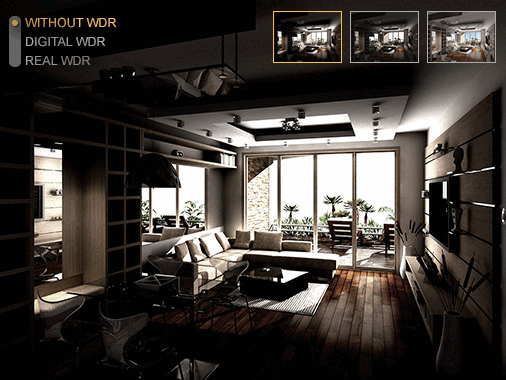
Real WDR AKA dynamic compression, is a feature that is designed to add more details to the high-bright and low-dark parts of the image captured by the camera.
The simplest way to think of real WDR is that the image sensor co-works with the signal processor at the moment of shooting, adjusting the exposure time to ensure that every pixel gets enough light, but before that, it smartly stores information about the bright parts so that they can't be burned in even if they are overexposed. The result, compared to normal contrast shots where often the shadows are just black spots and the highlights are blindingly white, will be that only the parts that really don't contain any extra information will be black or white.
It's worth knowing that digital WDR uses image processing algorithms to manipulate only the image once it has been captured to produce a result more pleasing to the human eye, but does not display information that was missed during the shooting process. The real WDR, unlike digital WDR, can provide much more information in the same environment.
The typical value of 120 dB means that anything from near total darkness to blinding snow can be in the picture at the same time, so you won't miss any detail.


Cameras equipped with NightVision feature a high-sensitivity image sensor, so they can produce colour images even in low light conditions (typically below 0.01lux). Despite this, the built-in infrared LEDs can be used as a night light source, but the camera must then be used in black and white (night) mode.
This is automatic by default thanks to the built-in brightness control switch, although the light threshold is lower than for conventional cameras.
NightVision cameras take colour night pictures that are fundamentally different from those taken with a normal camera. Moving objects (people, cars) captured by conventional cameras at night will be blurred, noisy and often only the red light line of cars will be visible. NightVision night images, on the other hand, are sharp, contrasty, and noise-free, and often indistinguishable from daytime images.

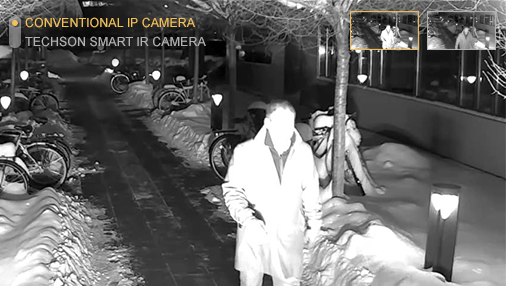
Since the intensity of light is inversely proportional to the square of the distance, it follows directly that distant areas will be less illuminated than nearby ones if the location of the light source is the same as the camera. On the other hand, close objects get a lot more light, and the closer they are to the camera, the more noticeable this effect is.
The Smart IR function automatically reduces the power of the IR reflector if too much reflected light is detected. This ensures that the face of the approaching person is not overexposed to a whitewash, even if they are looking at the camera from a few centimetres away.
Dynamic adjustment of the intensity results in balanced illumination for dark or night observation.

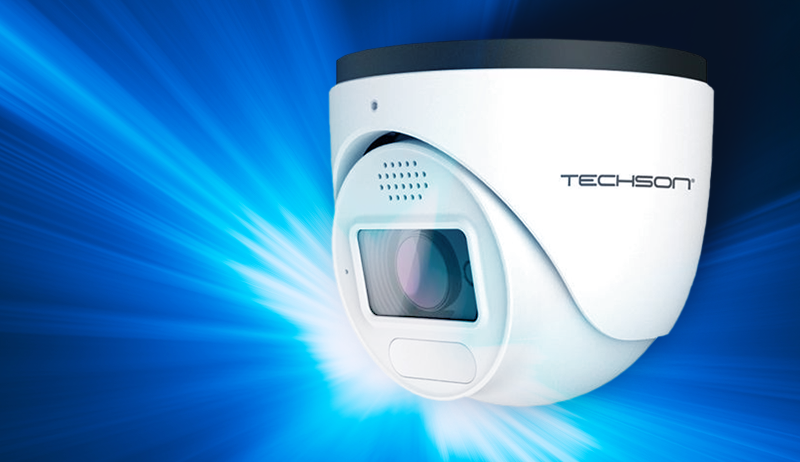
Hi-Power LEDs are high-performance 850nm infrared light-emitting diodes that replace conventional IR LEDs. Their light is scattered and homogeneous, yet intense enough to replace ten or more conventional IR LEDs. They produce less heat and, thanks to their mechanical design, their heat dissipation is more efficient. This not only increases the lifetime of the LED itself, but also that of the mounting device, which is not a negligible advantage for an expensive camera.

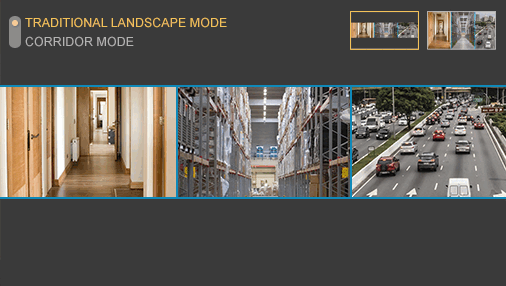
In some installation locations, the widescreen (16:9 aspect ratio) image provided by the camera may not fully fit the area to be monitored, e.g. aisles, warehouse shelving.

For this purpose, it is advisable to use IP cameras that can be switched from a horizontal 16:9 aspect ratio to a vertical 9:16 aspect ratio by rotating the camera 90°. All IP and AHD SmartSpeed recorders are capable of displaying vertical orientation images from IP cameras switched to corridor mode.
In addition to the usual 2x2, 4x4 and similar layouts, the NVR's screen also features grid patterns that include portrait-oriented setup format camera images in corridor mode.

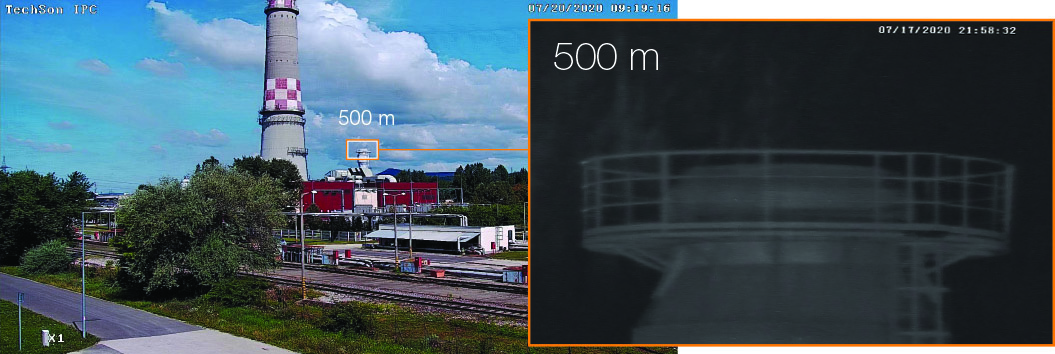
An advanced infrared laser reflector with automatically zooming optics to the angle of view, which can focus infrared light over long distances - up to hundreds of metres.
This allows the use of high zoom factor lenses at night. It is mainly designed for high performance PTZ cameras.

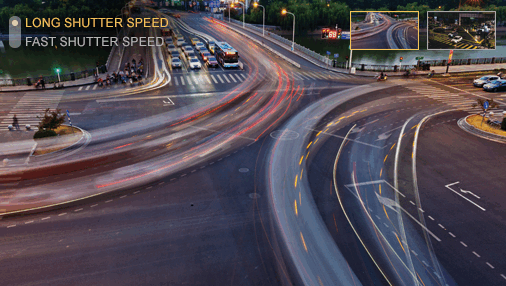
By setting the shutter speed control function correctly, you can get sharp, snapshot-like images about fast-moving objects. This makes it possible to read the number plates of vehicles even on the move.
Cameras with a manually adjustable shutter speed range can work both day and night with a value optimised for the task.


In addition to shutter speed adjustment, HFR [High Frame Rate] technology is an additional tool for processing fast movements. This allows up to 50 frames to be processed in one second instead of the usual 25, giving you twice the information.
However, using this feature also increases the amount of data stored proportionally.

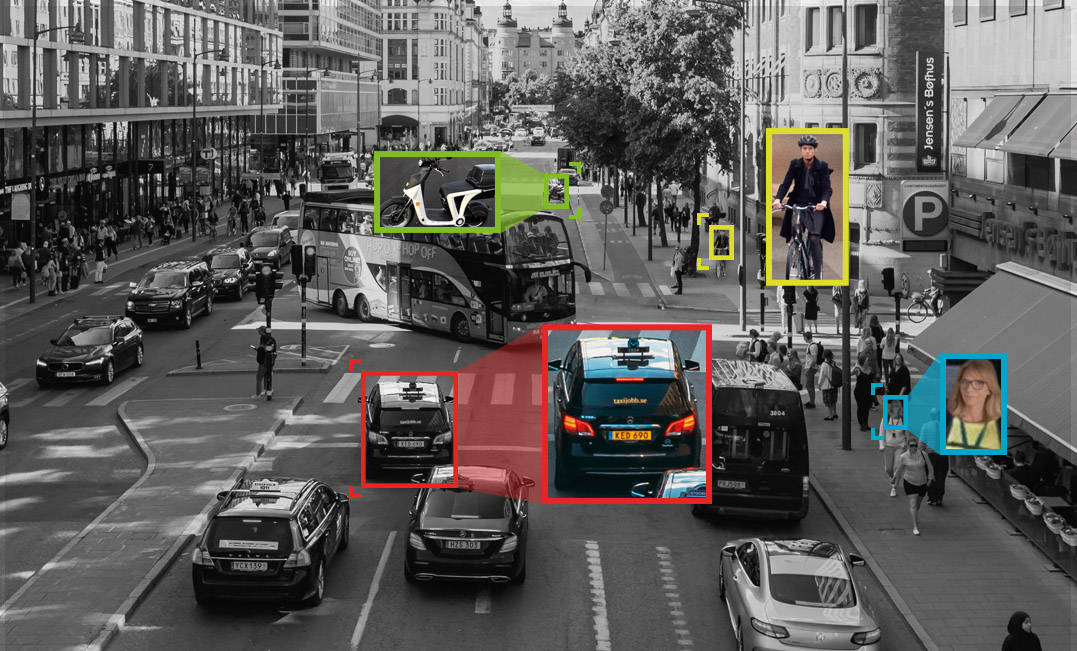
With object identification, the camera is able to distinguish between people crossing the line or entering the area, four-wheeled vehicles and bicycles, so the analytical functions used provide a more accurate alert signal.
False alarms are not triggered by birds, flying insects, falling leaves, dogs, cats, even wind blowing through trees or car headlights.

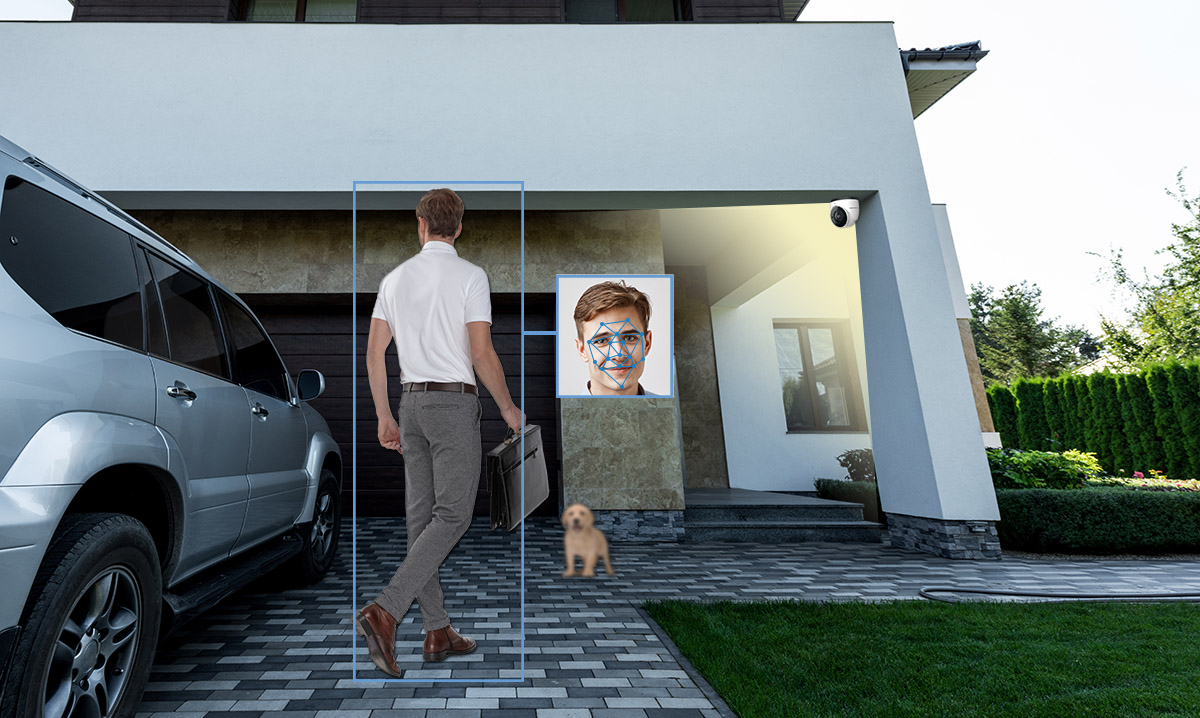
The intelligence of surveillance systems is constantly evolving. In many situations, biometric identification can provide vital information for the post-processing of certain events. In addition, facial recognition can also enable the system to provide the security department with important data immediately.
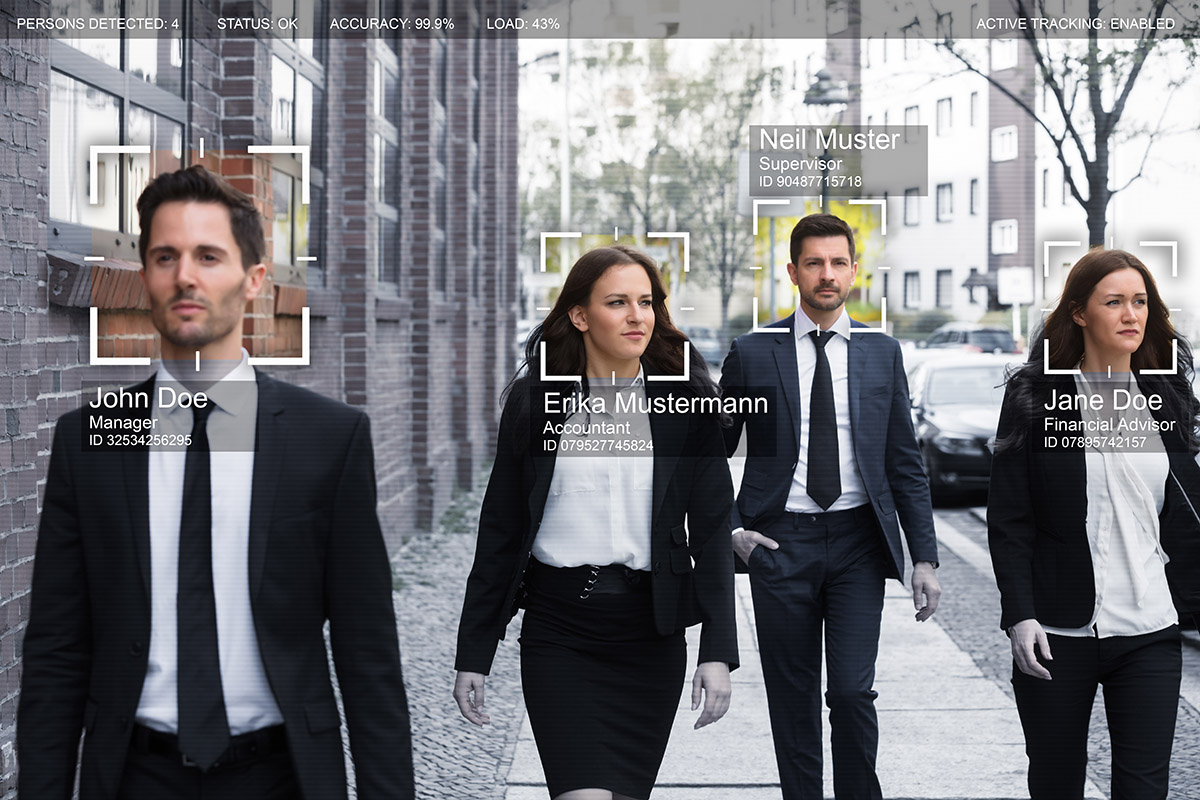
A database of faces allows you to create white and black lists and alert employees to VIP customers or undesirables. Facial recognition cameras work in conjunction with NVRs that support facial recognition and trigger a pre-programmed alert when a face is matched, which could be a door opening or even an email.

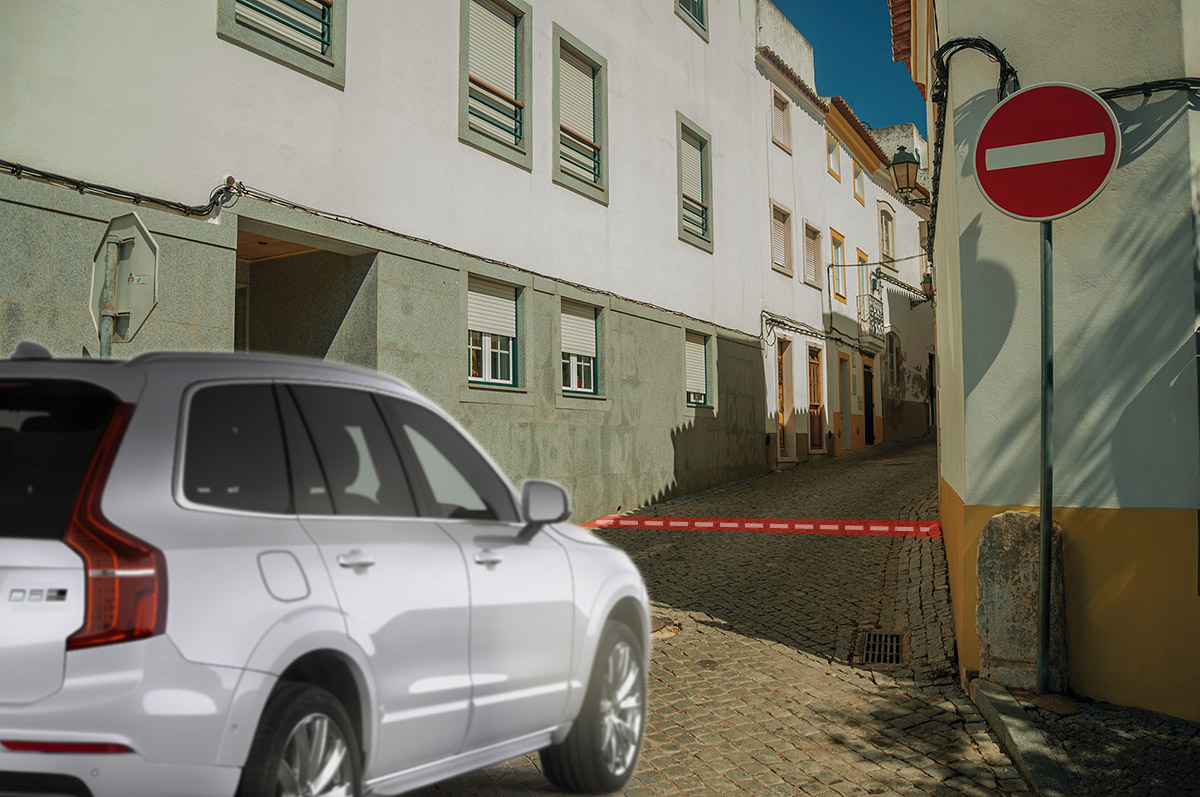
The object that triggers the alarm can be an unidentified moving object or an identified object (e.g. a person or a vehicle), depending on the technological level of the camera.
By setting the line crossing, gateways and entrances can be protected. Up to four independent lines can be drawn, allowing you to indicate movement towards four passageways, car parks or entrances at the same time.
The lines can also be configured to trigger an alarm when a line crossing is detected, for example, to detect a vehicle travelling in the wrong direction or an attempt to enter through an exit.

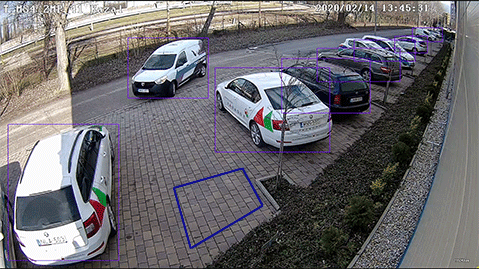
If an object crosses the boundary of the area we have plotted, the camera transmits an alarm.
The object that triggers the alarm can be either unidentified (i.e. any moving object) or identified (e.g. a person or a vehicle), depending on the technological level of the camera.
To set the intrusion detection is to draw a polygon as an area of the image. A recording or alarm is only triggered if something enters the area from any direction. Effective for use in business premises, warehouses, confined areas and parking lots. Movement within the area is not indicated by the function, only the intrusion itself.

A function specifically for counting people. You can define the areas and passages to be monitored by drawing lines and areas. The counting is bidirectional; people exiting and entering are counted separately.


The in-camera object counting function is based on object identification and provides continuous information on the number of people, cars and bicycles passing through a certain line, depending on the direction.
Practical uses include counting people entering and leaving a business premises, which can provide valuable statistical information for the owner.

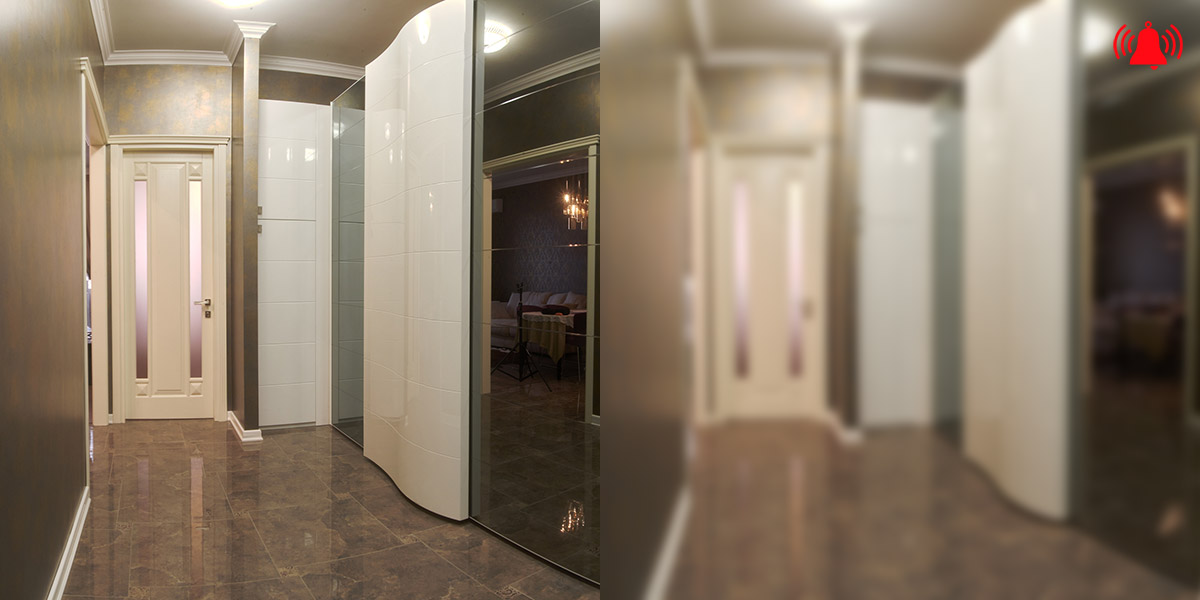
The cameras can only perform their function, i.e. provide an evaluable image, if they are properly installed and set up by the installer. By using tamper features, the cameras are able to detect and give an alarm signal if they are turned from their original position, covered or sprayed with spray paint, and can also detect if the lens is intentionally moved (loss of focus).

A feature used especially for PTZ cameras, whereby the camera focuses on the detected object, zooms in and automatically tracks its movement.
If the target object moves out of the camera's field of view, the PTZ returns to its original position and waits for another object. The object for auto-tracking is usually a person or vehicle.

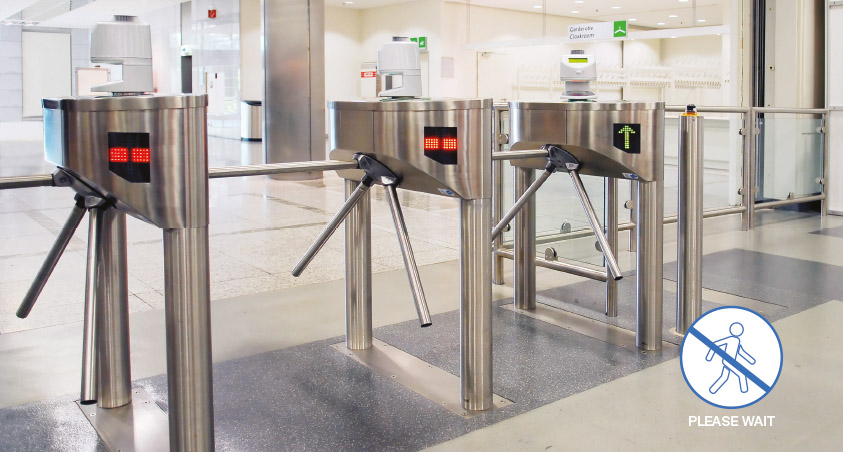
The outputs of cameras with a relay switch can be activated in the event of an alarm. These relay outputs are mostly monostable and return to their resting state after the alarm has ceased. Although the relay output remains monostable in the case of a maintained relay contact, it only reaches its rest state when a logic variable is activated, not when a timer is activated.
For the object counting function, a threshold number can be specified above which the relay output becomes active and remains active until the number of objects falls below the threshold.

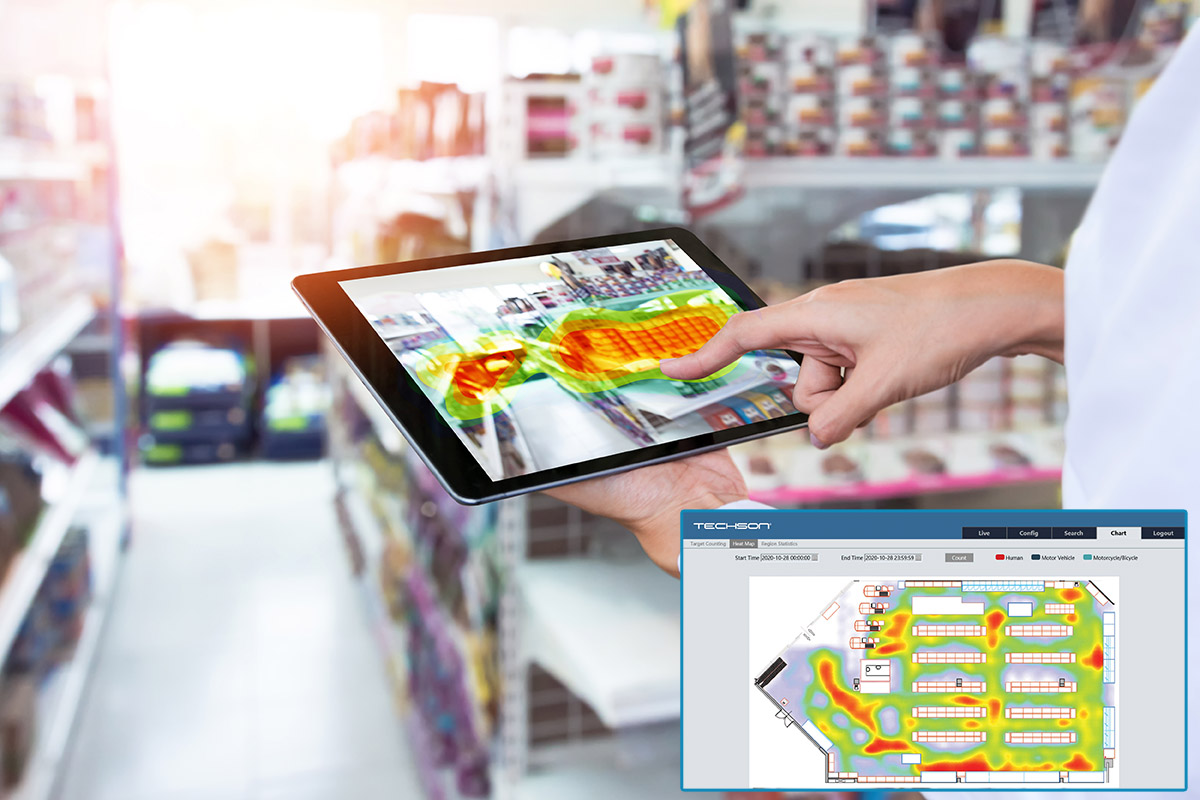
Use the Heatmap feature to get an accurate representation of the movement of people or other objects in the area you are monitoring. It provides an easy to evaluate visual representation of the movement of objects in the area.
It can be used to obtain useful statistical information such as which areas of a store are most frequently visited by shoppers. This can be used to place important items in the most frequently visited areas.

Using cameras with alarm inputs, a wide range of automated functions and externally controlled recording can be implemented. This simple method can be a great help for anyone recording, for example, a door opening or a doorbell activation.

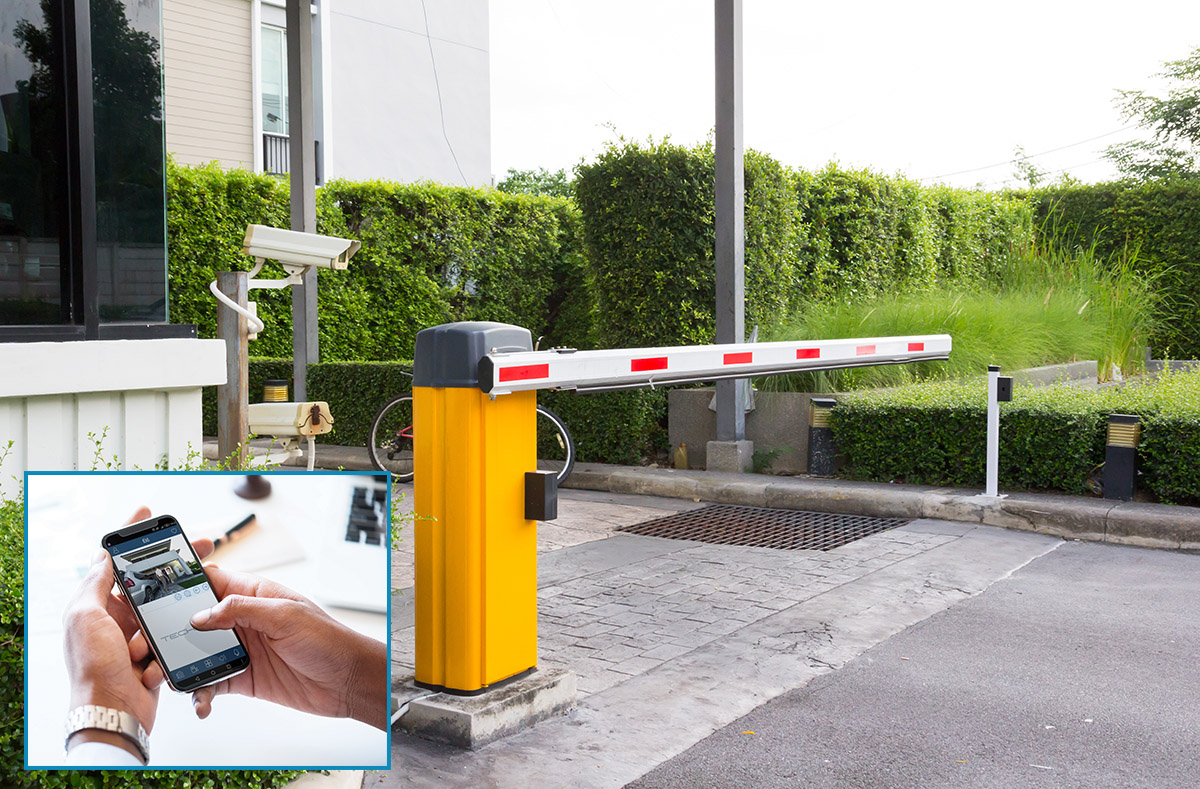
The range of applications for relay outputs is limitless. In the world of safety engineering, this simple function can provide us with solutions for numerous situations. You can integrate with third-party devices, control a turnstile for license plate recognition, open a door for facial recognition, interrupt the power supply, and much more.
Thanks to the relay output offered by the camera, you can also save on wiring in most cases, as the output is located exactly on the right place where you need it.

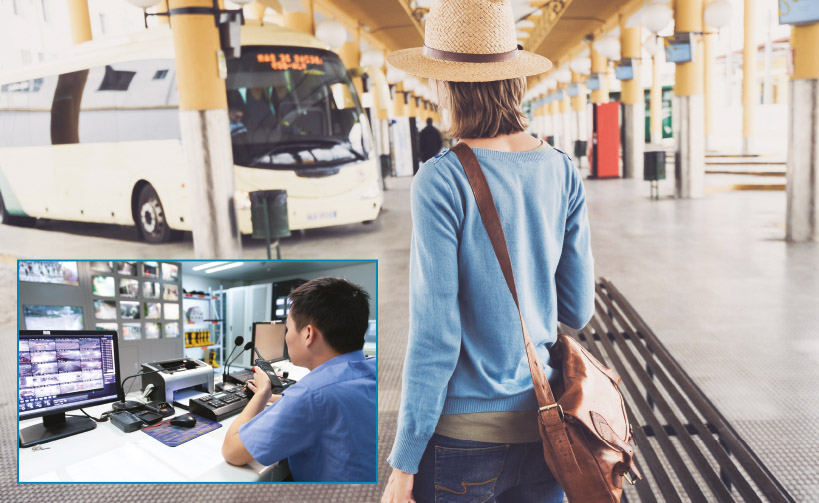
The cameras are available with optional audio input and output, some models require an external device to be connected, while others have a built-in audio source. The audio connection of a device is bidirectional if the device has both a speaker and a microphone and their connectors. This allows two-way communication through the camera.
This feature allows the operator of the surveillance system to remotely contact the person visible on the camera.

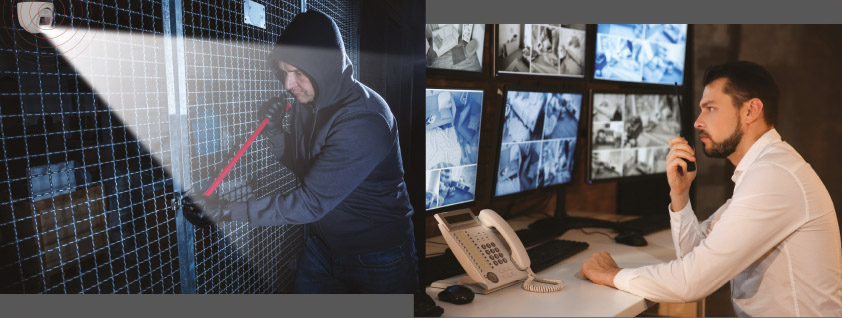
A camera with a perimeter alarm function offers real protection, as the cameras are equipped with audiovisual parts that warn the alarmed person with a white flashing light and can also transmit a predefined message to the alarmed person via the built-in loudspeaker.
This is not only for the security of the homeowner's property. It can also be used to protect a parking space, gate or other restricted area and can warn an unauthorised person entering or an inattentive driver of unauthorised parking.

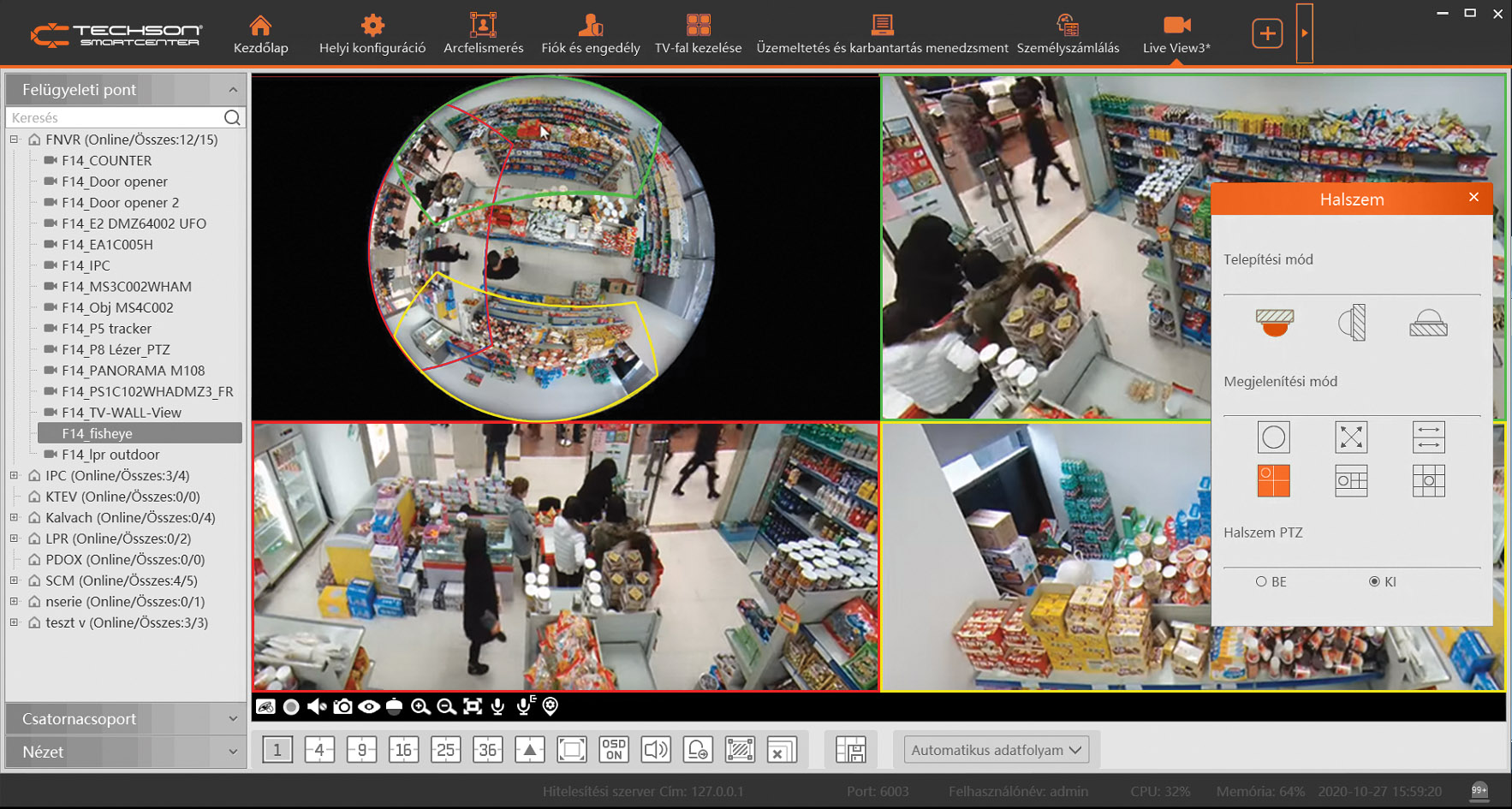
The virtual PTZ function is only available for Fisheye cameras. Using a special dewarp operation, up to 3 virtual PTZ images can be created from a single Fisheye camera spherical image by software conversion, in addition to the 360° panoramic image.
This feature is available live playback mode. This means you can pan, tilt or zoom anywhere in the image without missing anything.
The virtual PTZ feature also reduces the amount of cabling, equipment and channels required when installing a Fisheye camera, as the camera only uses one channel for image transmission, so the recording is only stored on the single channel of the recorder.